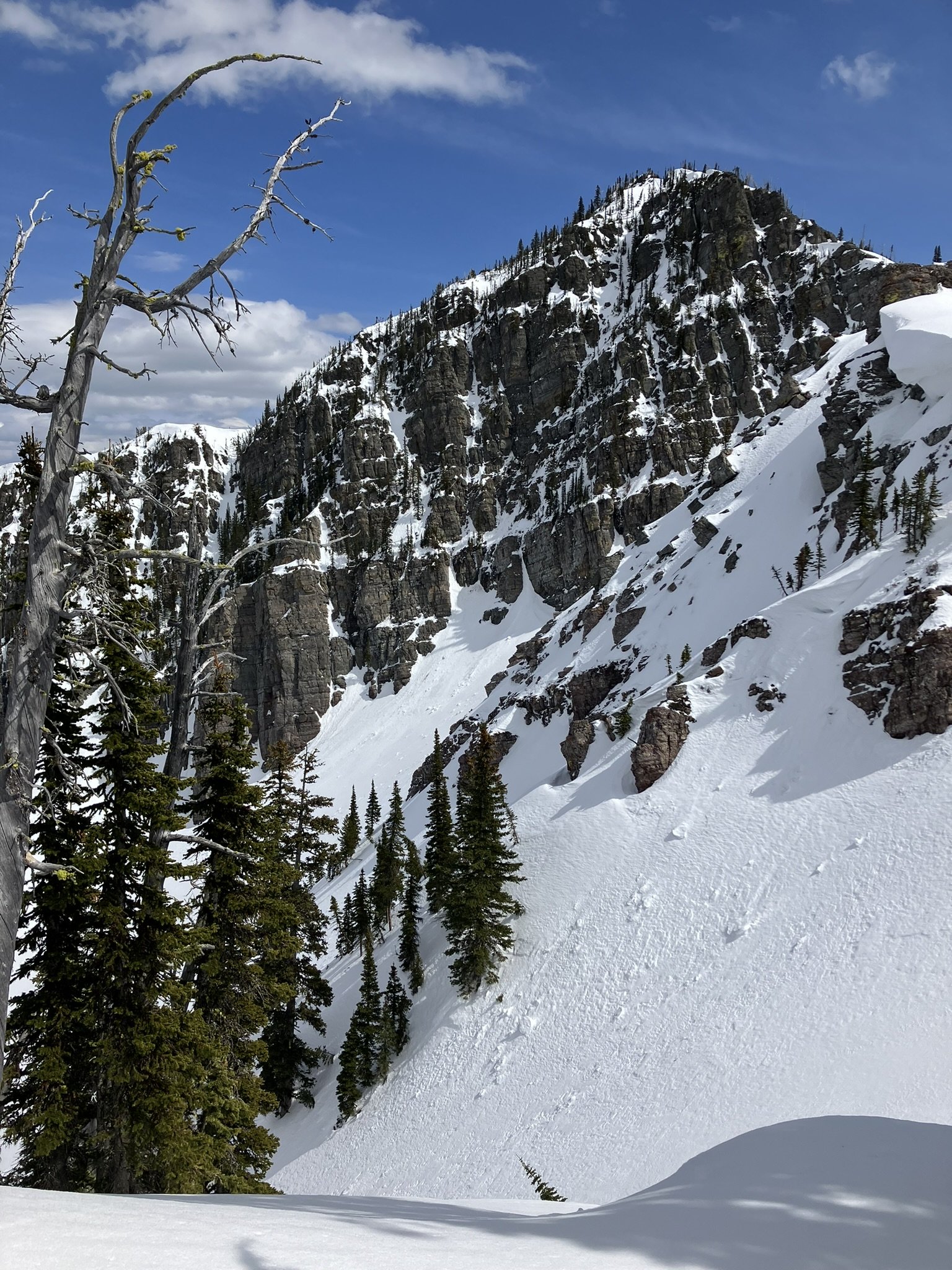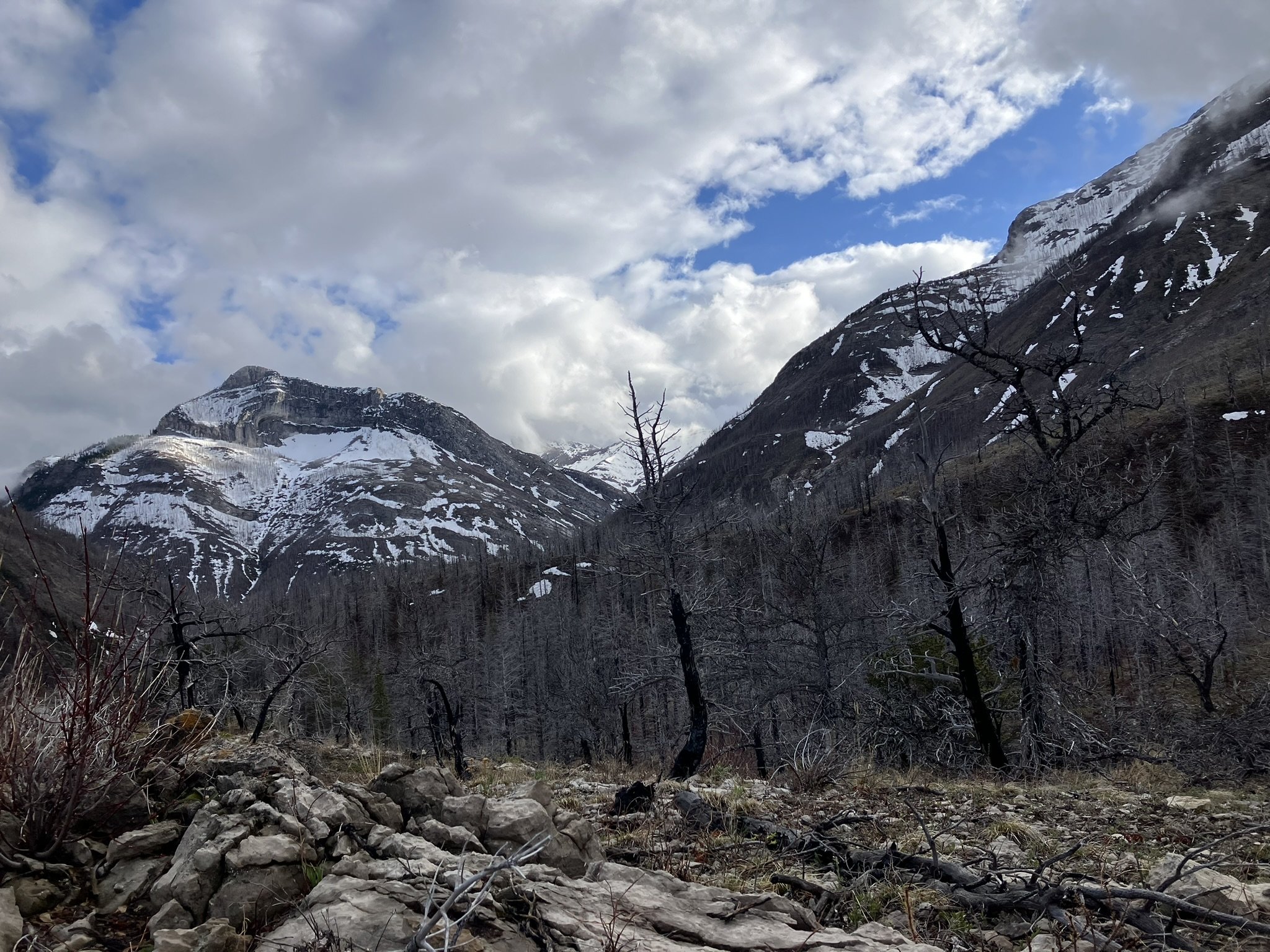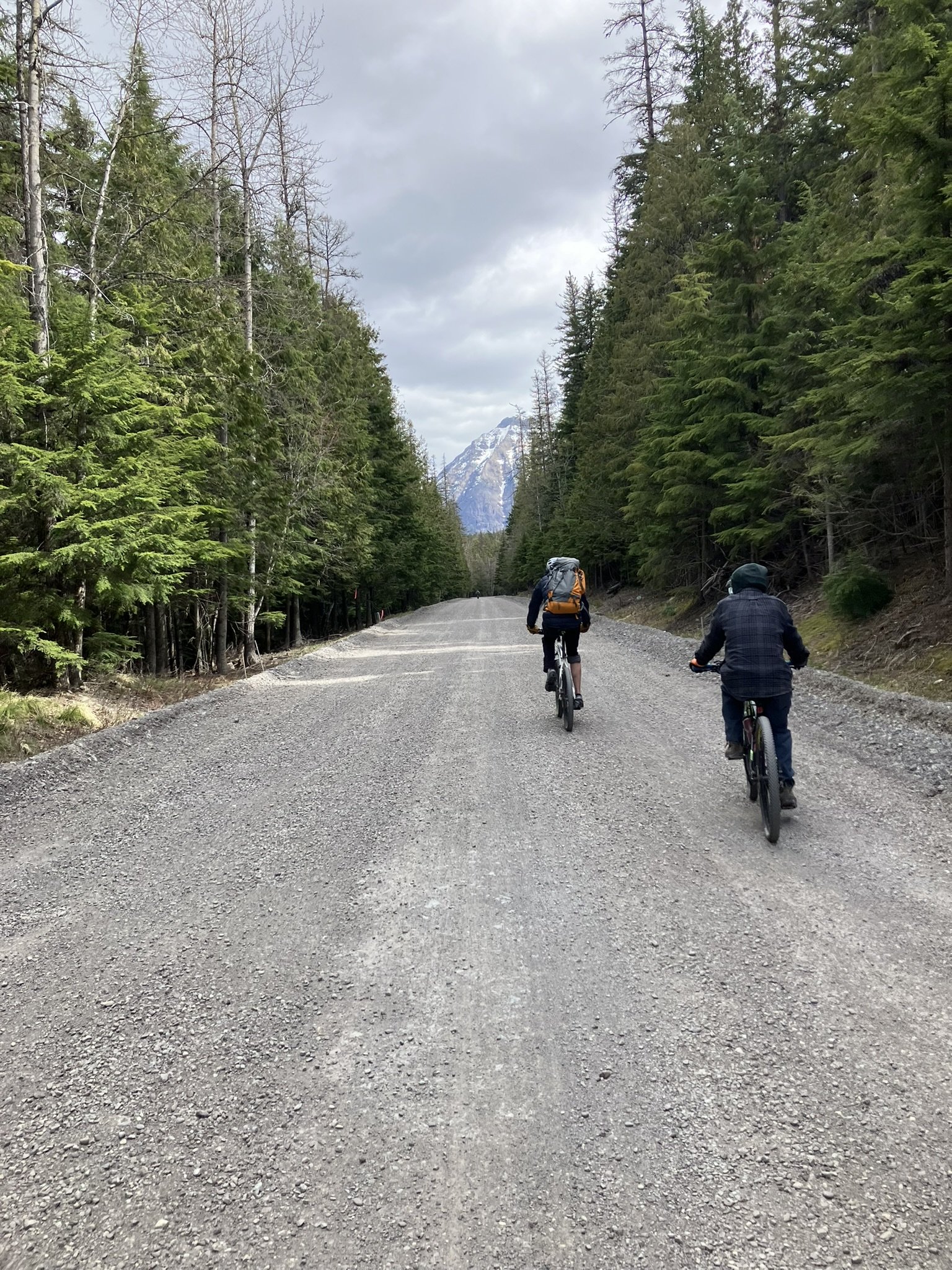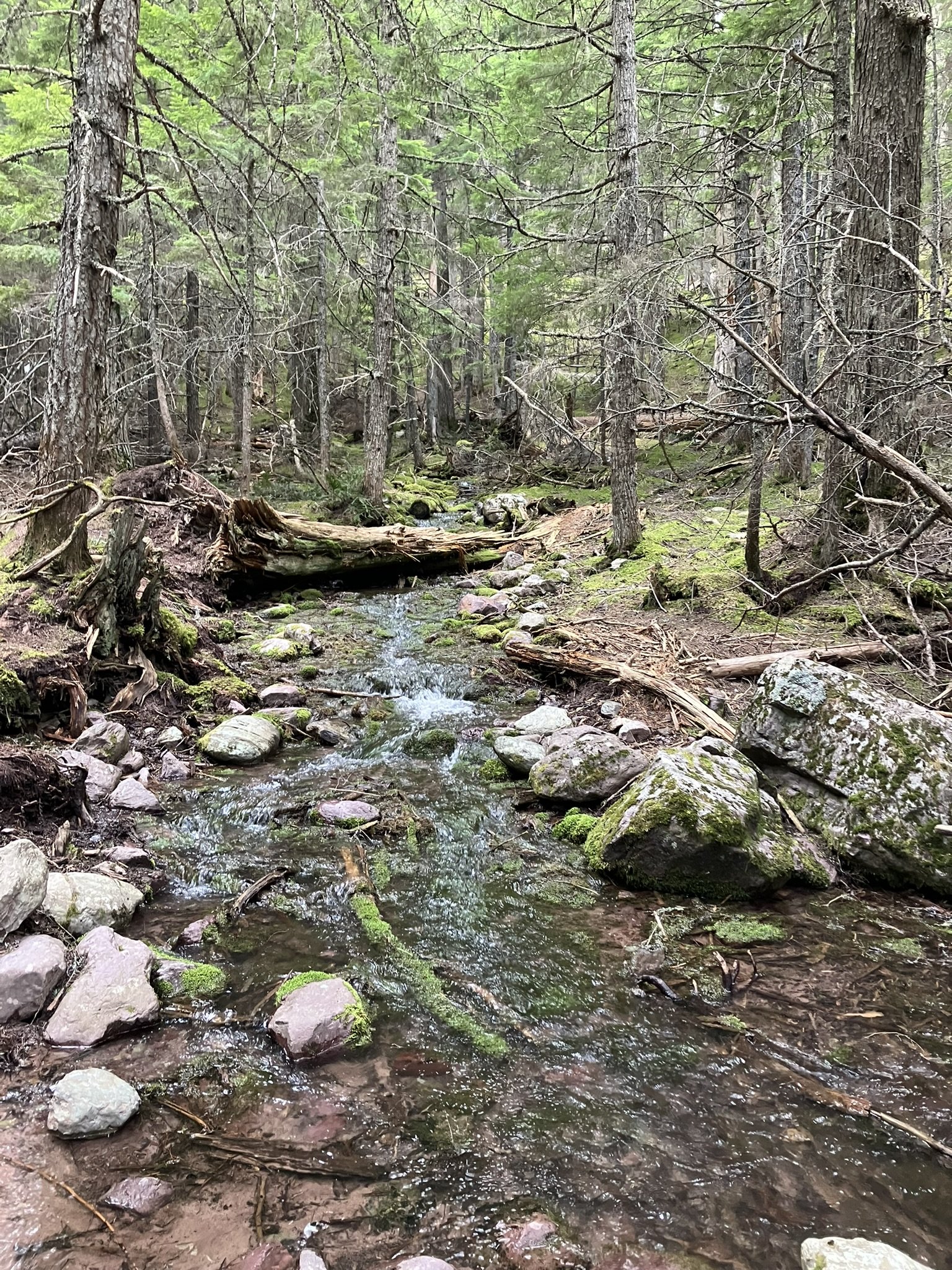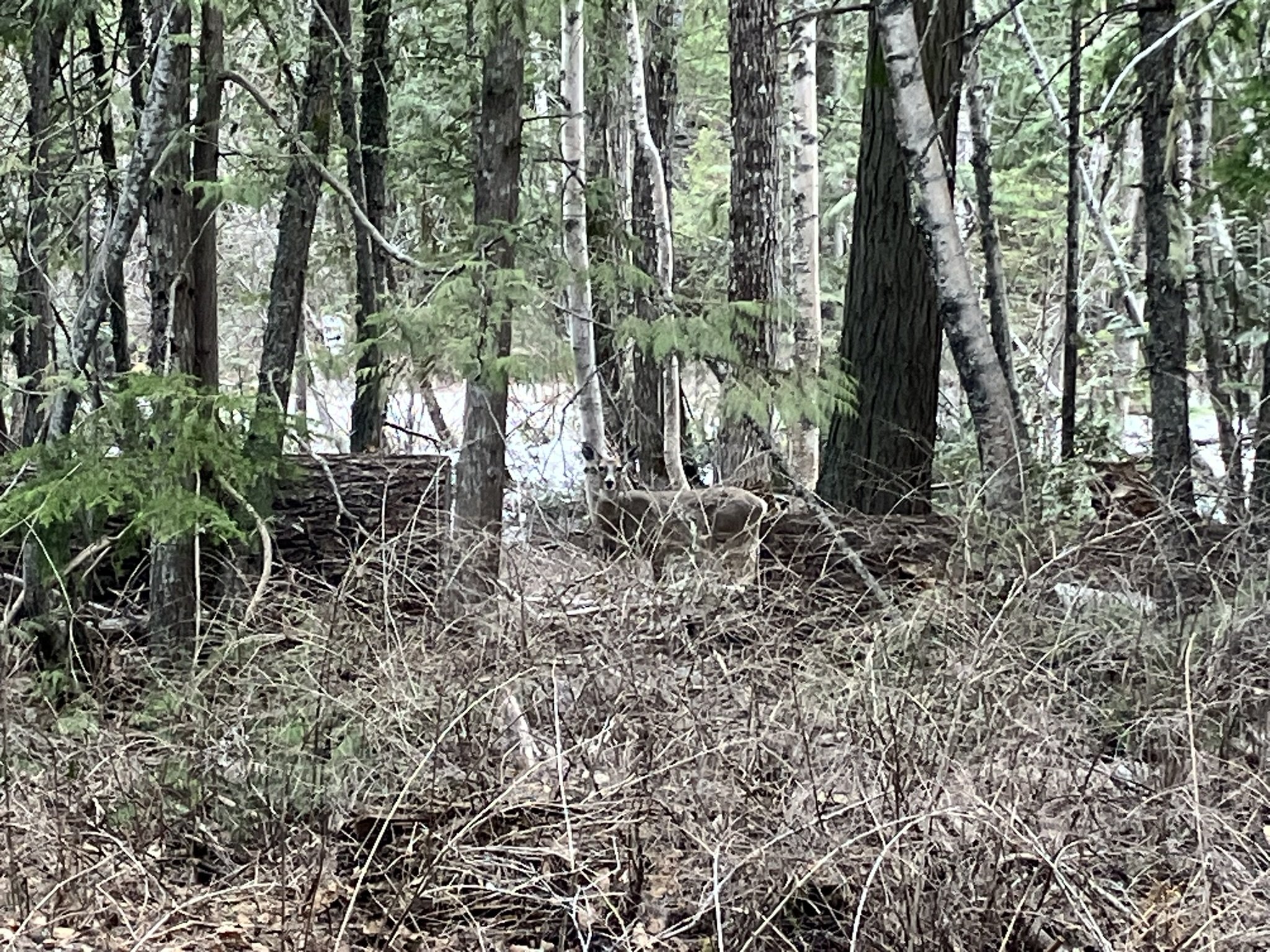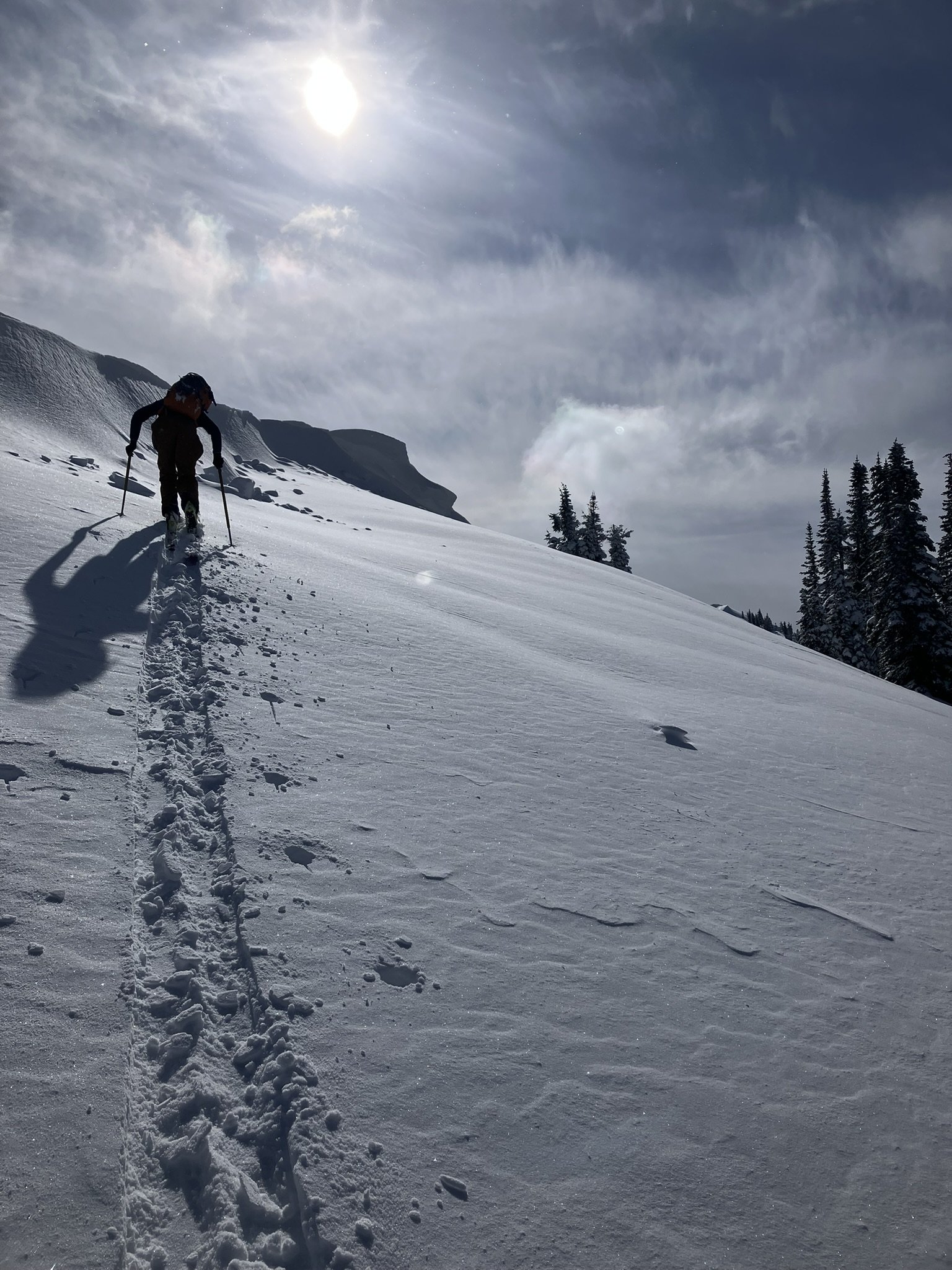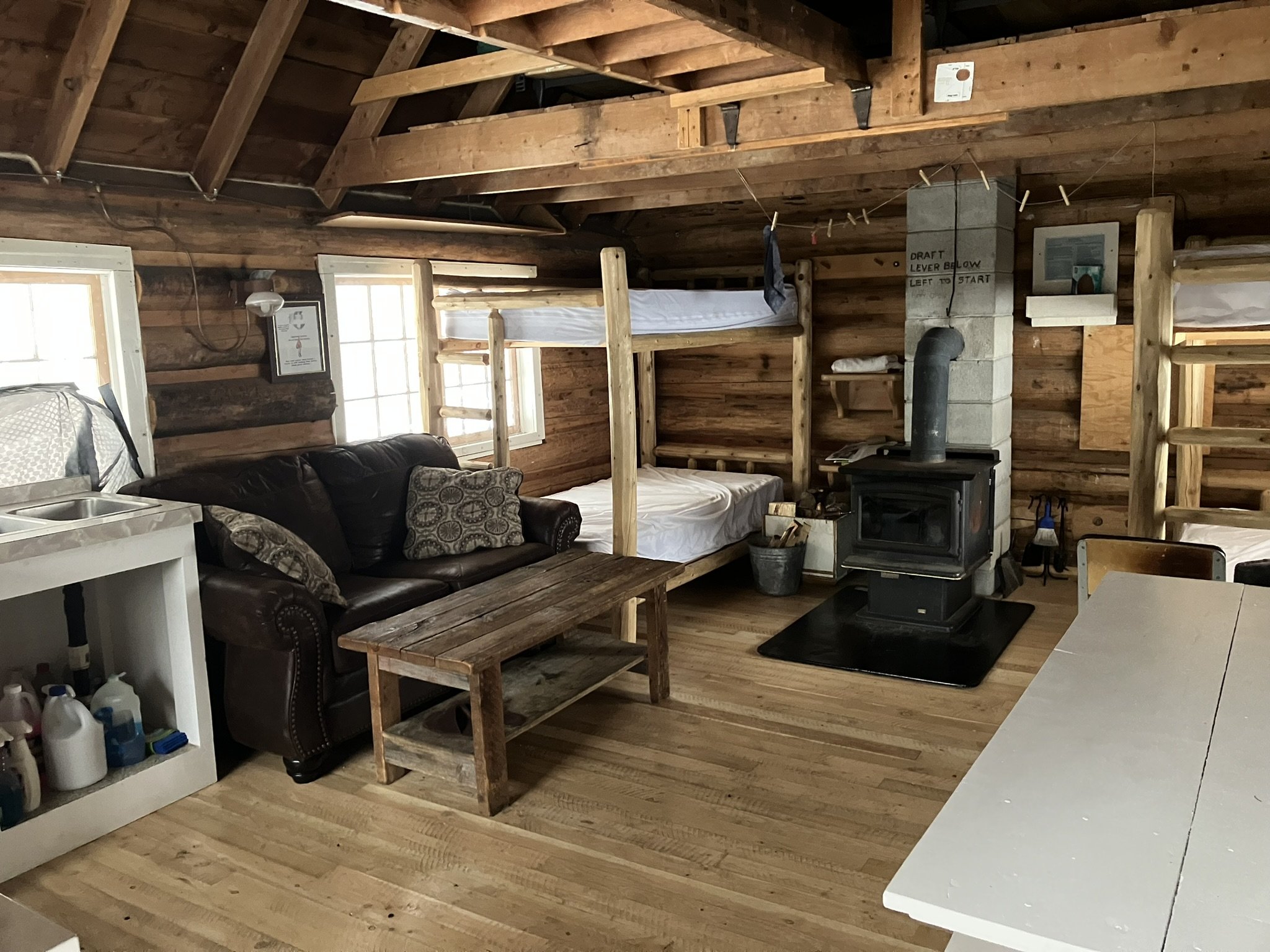Length: 14.6 miles or 23.5 kilometers (out and back)
Trailhead: Cameron Falls Parking Lot
Difficulty: Hard, Class 2
In Alberta, Canada, Waterton Lakes National Park boasts a breathtaking landscape of rugged mountains, glacial lakes, and abundant wildlife. This international peace park was established in 1895 and borders Glacier National Park in Montana. The area is known by the Blackfoot as “Paahtómahksikimi.
The route starts directly at Cameron Falls, but after a few minutes of walking on the trail you can find seclusion! This trail follows the Great Divide Trail (GDT) along the Carthew-Alderson Trail. While it is very common for this trail to be hiked through to Cameron Lake or in reverse (easiest), the route described here is accessible for those staying in the area that do not have a vehicle or are alone or want to save gas! Think walking from Waterton Townsite to the trailhead up to a surrounding peak, then back to town for some evening lake views!
The trail travels above and follows Carthew Creek up a treed drainage (not all burned!) which offers view that become grander as the uphill continues. The first mountain lake is Alderson Lake, which has a massive rock face along the E/S shores of the lake. There is backpacking campsites here. Continuing on the winding trail up to Carthew Lakes you experience more and more views of surrounding summits and far into the distance the rocky mountain plains. And the trail decreases in steepness!
You can follow the trail to the saddle between Mount Alderson and Mount Carthew and looking for the rugged trail that climbs the ridge to the ‘knob’ between Mount Carthew and Buchanan Ridge and wraps below this knob of the SE face to the ridge that goes up to Mount Carthew (8,648’ or 2,636 km). The views from the summit offer excellent views of many peaks in the park and beyond into Glacier National Park and Akamina-Kishinena Provincial Park.
One of the highlights is seeing into the remote Lake Wurdeman and Lake Nooney drainages from the summit.






















